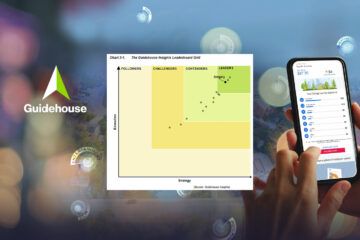The dynamics of our industry are undergoing significant changes driven by three simultaneous trends:
- the rise of electrification and customer-owned distributed energy resources (DERs),
- the shift towards renewable energy, and
- the digital transformation of the customer journey.
These three trends ultimately result in the need for a much greater connection between customers and the grid, particularly to enable demand flexibility. In the past, flexibility primarily came from the supply side, as the demand side was seen as largely inflexible. However, the aforementioned trends have revealed two critical issues with the traditional approach:
- With the increasing reliance on renewables, achieving flexibility on the supply side has become more challenging. We cannot control when the sun shines or the wind blows, which leaves the only reliable option for flexibility being expensive battery storage.
- On the other hand, with the proliferation of DERs, the demand side has become considerably more flexible. Customers can now contribute to the grid with rooftop solar panels, adjust their electric vehicle (EV) charging schedules, manage heating and cooling loads, or even utilize their own batteries during times of grid constraints.
Given these changes, as an industry, we need to shift from the practice of flexible supply to flexible demand. Customers and data are crucial parts of the flex demand equation.
Innovations at Bidgely
As we approached this problem at Bidgely, we posed the question:
“how might we enable utilities to realize flexible demand with the data they already have?”
A variety of ideas emerged, and ultimately 3 innovations bubbled to the top:
- DER Grid Planning to realize the potential of the customer through NWA.
- Electric Vehicle Managed Charging to take advantage of the fully shiftable load of electric vehicles.
- Time of Use Customer Recruitment & Coaching to encourage more customers to adopt TOU and shift their load accordingly.
Finding Your Flexible Load
In this blog post, we will dive into why DER Grid Planning needs to enable demand flexibility through bottom-up data visualization.
As we explored the challenges associated with demand flexibility, one key aspect stood out: the necessity of a data-driven approach to facilitate analysis of non-wires alternatives. The potential for significant reductions in both bulk load and localized demand is huge. RMI notes that:
“Examining just two residential appliances—air conditioning and domestic water heating—shows that ~8% of U.S. peak demand could be reduced while maintaining comfort and service quality” [1].
However, many utilities are blind to where these flexible loads actually sit on their system and therefore they cannot appropriately plan for NWAs or even right-sized grid deployments.
This issue of visibility into the system led us to think about how to combine behind-the-meter (BTM) analytics in the form of disaggregation to grid planning and NWA analysis.
In order to provide the visibility needed we took all of the household meters on a particular circuit and performed disaggregation on each household to reveal what appliances were at the household and when the specific load was utilized.
By aggregating the 8760 load curves, along with end-use designations, from all households within the circuit, we obtained the overall load curve for that circuit. This approach allows users to pinpoint the hours of constrained grid operation over the past year and identify the potential load that can be shifted during those periods. The goal is to be able to identify if there is enough flexible load available during those constrained hours to avoid the need for costly system upgrades. While not every circuit may have the potential for non-wires alternatives, prioritizing circuits with the highest potential is essential.
To meet the needs of their customers and integrate renewable energy sources into the grid, electric utilities must prioritize demand flexibility. This requires investing in a flexible grid infrastructure, accurate demand analysis tools, and mechanisms for incentivizing customers to shift their energy usage patterns. By doing so, utilities can provide reliable, affordable, and sustainable energy to their customers.
[1] RMI’s The Economics of Demand Flexibility report


